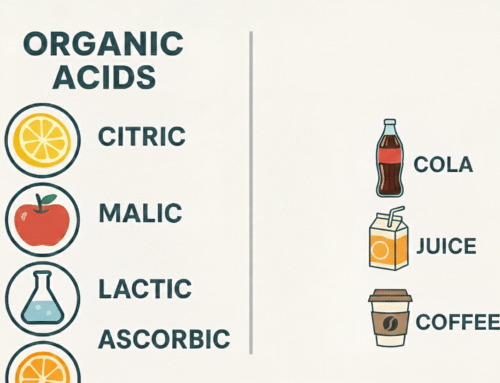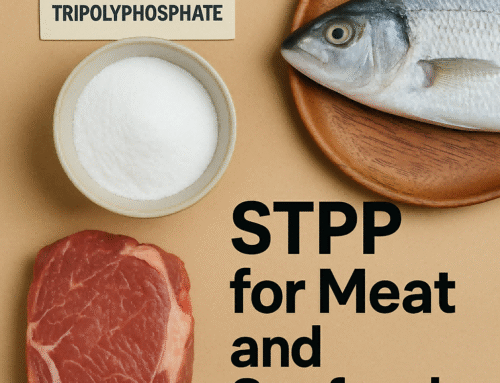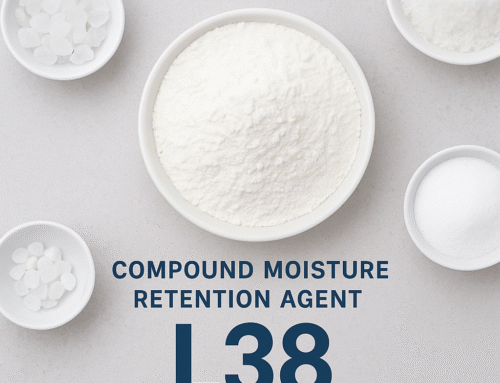Emulsifier E332, also known as potassium citrates, is a versatile group of food additives widely used in the food industry. These additives play a crucial role as emulsifiers, stabilizers, and acidity regulators, ensuring the stability, texture, and overall quality of various food products. Within the category of emulsifier E332, two prominent components are Potassium Dihydrogen Citrate and Tripotassium Citrate. These compounds, which fall under the umbrella of emulsifier E332, offer specific functionalities and applications in the food industry. Let’s explore the role of emulsifier E332 and delve into the unique properties and applications of Potassium Dihydrogen Citrate and Tripotassium Citrate as essential components of this versatile emulsifier.
E332 (i) Potassium Dihydrogen Citrate
It is commonly used in the food industry due to its versatile properties.
Chemical Formula: C6H7KO7
Molecular Weight: 226.27 g/mol
Solubility: Highly soluble in water
pH Value: Typically acidic
Uses and Applications of Emulsifier E332:
Potassium dihydrogen citrate functions as an emulsifier, playing a crucial role in stabilizing emulsions and preventing the separation of oil and water phases in food products. Some specific applications include:
- Salad Dressings: Potassium dihydrogen citrate is used in salad dressings to stabilize emulsions, ensuring that the oil and vinegar components remain well-mixed and prevent separation.
- Mayonnaise and Sauces: It is utilized in mayonnaise and various sauces to maintain a stable emulsion, preventing oil and water from separating and resulting in a smooth, creamy texture.
- Bakery Products: Potassium dihydrogen citrate is employed in baking to improve the emulsification properties of dough, resulting in enhanced texture, structure, and shelf life of baked goods such as bread, cakes, and pastries.
Examples of Foods
Potassium dihydrogen citrate is commonly found in a range of food products, including:
- Soft Drinks: It is used to adjust the acidity levels and enhance the flavor profile of carbonated beverages.
- Jams and Jellies: Potassium dihydrogen citrate helps to stabilize and improve the texture of fruit spreads.
- Salad Dressings: It is used as an emulsifier to maintain stability and prevent separation in oil and vinegar-based dressings.
- Sauces and Condiments: It enhances the texture and emulsification of sauces, such as mayonnaise, by preventing oil and water separation.
E332 (ii) Tripotassium Citrate
It serves as an acidity regulator and emulsifier in the food industry.
Basic Chemical Properties:
Chemical Formula: C6H5K3O7
Molecular Weight: 306.39 g/mol
Solubility: Highly soluble in water
pH Value: Typically alkaline
Uses and Applications as an Emulsifier:
Tripotassium citrate also acts as an emulsifier, contributing to the stability of emulsions in various food products. Some specific applications include:
- Carbonated Beverages: Tripotassium citrate is used in carbonated beverages to stabilize emulsions and enhance the overall sensory experience of the drinks.
- Processed Cheese: It is employed in processed cheese to improve emulsification properties, ensuring a smooth and creamy texture.
- Ice Cream and Frozen Desserts: Tripotassium citrate helps stabilize emulsions in ice cream and frozen desserts, preventing the formation of ice crystals and resulting in a smoother and creamier product.
- Bakery and Confectionery Products: It is utilized in baked goods and confectioneries to enhance texture and stability, ensuring a desirable mouthfeel and appearance.
Examples of Foods
Tripotassium citrate is commonly used in numerous food products, including:
- Carbonated Beverages: It helps regulate acidity levels and enhance the flavor of carbonated drinks.
- Processed Cheese: Tripotassium citrate is used to adjust the pH and improve the emulsification properties in processed cheese products.
- Bakery Products: It aids in dough conditioning, improving the texture and shelf life of baked goods such as bread and cakes.
- Ice Cream and Frozen Desserts: Tripotassium citrate helps stabilize ice cream mixtures, preventing crystallization and improving texture.
In conclusion, emulsifier E332, comprising potassium citrates, serves as an important component in the food industry. Potassium dihydrogen citrate acts as an acidity regulator and emulsifier, while tripotassium citrate serves as an acidity regulator and emulsifier as well. Both compounds find applications in a wide range of food products, contributing to improved taste, texture, and stability.





